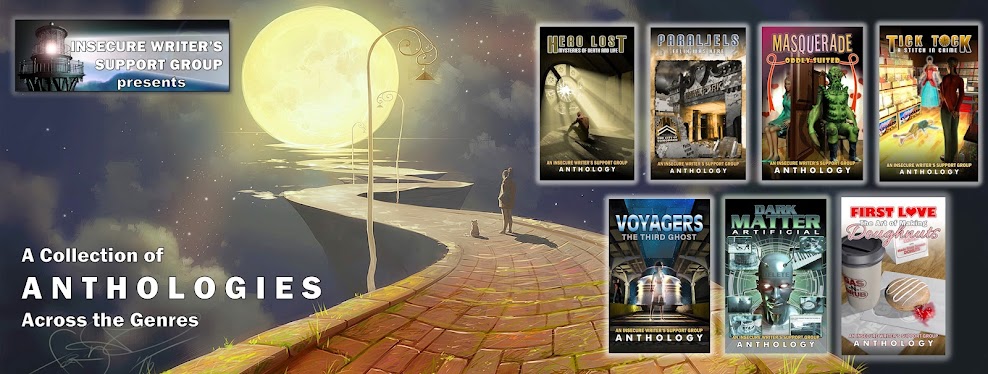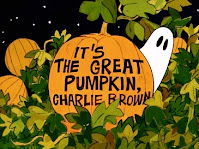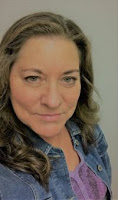Bish Denham is from the U.S. Virgin Islands, where her family has lived for over a hundred years. The author of two middle grade novels and a collection of retold Jamaican Anansi stories, she says, “Growing up in the islands was like living inside a history book.” Learn more about Bish at her blog bish-randomthoughts.blogspot.
Wednesday, November 1, 2023
Finding and Collecting Characters
Monday, October 16, 2023
Art Inspires Art
 |
Mary Aalgaard and Jeanne Cooney It's Murder, Dontcha Know? Stage Play Reading at Central Lakes College Brainerd, MN |
 |
Playwright Mary Aalgaard and Director Joey Yow |
Wednesday, October 4, 2023
Happy “almost” Halloween!
Wednesday, September 20, 2023
Why Write a Series?
- Readers who enjoy the first book will probably read the other titles. Even if they catch the first book on its release date, they will likely continue picking up the other books as they are published.
- If for some reason they catch a later book first, readers will go back for the earlier ones.
- It builds one’s author brand.
- A template from the first book’s marketing can be duplicated, making it easy to set up promotions. (With adjustments as this industry is constantly changing.)
- Determine genre, length, and theme. Length might vary from book to book, but generally books in a series are close in length. The theme of each one might vary, too, but there is always the overall theme to consider.
- Outline (as best as possible) each book. Not everyone outlines, but at least a general idea for where the series is going helps.
- Be aware of overlaps and continuing characters. This is where a story Bible comes in handy. Keep track of characters, events, items, etc. for consistency. A timeline of events can also help.
Wednesday, August 16, 2023
How to Write Talking Animals
Wednesday, August 9, 2023
Patience Through Metaphors
Wednesday, August 2, 2023
Getting Middle Schoolers Excited About Reading
- Plan lessons around your favorite books and topics. If you’re excited about the book, that enthusiasm will show and may infect your students – in a good way!
- Show students you’re reading, too. Post a picture of your current read on a board each week and encourage kids to ask about it.
- Maintain a classroom library. I see this in classrooms for the little kids all the time, but not so much in classrooms for older kids. Fill it with a wide variety of popular novels – books that would appeal to both boys and girls. Consider including shorter stories and some with illustrations that may appeal to reluctant readers.
- Encourage independent reading by providing time to read. Have students set individual goals and reward students for reaching them. Don’t attach a grade to it though. Students may get turned off by that.
- Watch movies of the books after reading them and compare the differences.
- Use audio books. Okay, so that’s not exactly reading, but it could get reluctant readers interested in books.
- Implement classroom book clubs in which students get to choose what they want to read from a list of books and then get grouped with others who want to read the same thing. Give them some ideas for topics they can discuss that are related to the books. Encourage them to come up with their own.
- After reading a book, have students participate in activities that help them flex their own creative muscles: imagine a different ending, write a letter to the main character referencing a specific scene, interview the villain, draw a map of the story’s setting, etc.
- Introduce students to a popular new series. The cliff hangers might entice reluctant readers to keep reading.
- Adopt an author. If students are excited about an author’s book, visit that author’s website and find out if that author can do a school visit or Skype visit. You can also see if that author has done any videos or webcasts that can be shown in the classroom.
Sherry Ellis - The Ghosts of Pompeii (in VOYAGERS)
Sherry Ellis is an award-winning author and professional musician who plays and teaches the violin, viola, and piano. when she is not writing or engaged in musical activities, she can be found doing household chores, hiking, or exploring the world.
Ellis' books include Don't Feed the Elephant; Ten Zany Birds; That Mama is a Grouch; That Baby Woke Me Up, AGAIN; Bubba and Squirt's Big Dig to China; and Bubba and Squirt's Mayan Adventure.
She lives in Atlanta, Georgia. For more information about her work, she invites you to visit her website at www.sherryellis.org.
Wednesday, July 5, 2023
Restart with a Bang!
Wednesday, June 7, 2023
How Did the IWSG Begin?
Here is its story.
Wednesday, May 10, 2023
Tackling Writer's Block
by Deniz Bevan
I’ve written a few blog posts before about overcoming writer’s block.
Sometimes it’s the result of a dearth of ideas, other times due to factors beyond our control.
One of the oft-suggested methods of overcoming a block is to repeat the same action every day.
I find it easier to write every day than to exercise every day!
 |
| The Maiden’s Tower, Istanbul |
For those times when we can’t do that – faced with a deadline or the need to by-gum-get-things-done – I’ve got a few tips and tricks that have helped me:
Read poetry, especially something that’s written in a style completely unlike what you’re used to reading or writing. Penning a dark urban mystery? Read some Gerard Manley Hopkins. Creating a lyrical literary masterpiece? Browse some Bukowski. The contrast, and the turned-on-its-head way of looking at the world, tends to jump start creativity.
 |
| The ancient town of Ephesus |
 |
| Lake Geneva shoreline |
Browse images!
I love my Story Inspirations board
It’s useful for so many things:
--seeing the exact expression on a character’s face
--visualizing a location you haven’t had a chance to visit yet
--remembering to include details of colours and textures into descriptions!
--capturing the feel of a kiss (if you’re writing a romantic scene)
 |
| The Aegean Sea |
It’s also useful for story prompts! Not sure how to wade into a scene? Pick a location or a pose or an object (yes, my latest pin is of a clawfoot bathtub!), slide a character into position, and begin to write!
What are your go-to methods for finding inspiration at the start of a writing session?
Wednesday, May 3, 2023
Rapid Release of a Series
How to Rapid Release a Series
Authors used to come out with a new book every three years or so. Fans were forced to wait for a full-length novel from their favorite author. However, eBooks and the ability to self-publish changed that long wait. Now authors could put out books faster, including short stories and novelettes.
Let me outline some of the benefits of rapid releasing a series:
Maintains reader interest:
Fans no longer have to wait years and years.
Reader interest in a series doesn’t fade with releases coming out so close together.
Those who like to read an entire series at once can safely jump in knowing they can get to the last book very soon.
It keeps the author’s name out there longer:
Authors with books in rapid release are constantly on social media and more visible to readers.
Reviews keep appearing for the books, spreading awareness.
It gives every book time to build:
Readers who discover the second or third book will go back for the previous ones.
When one book starts to fade, another is released, renewing interest.
Consistent marketing:
Book marketing is ever-changing, but books released close together can benefit from the same promotional ploys.
A template from the first book’s marketing can be duplicated, making it easy to set up promotions for the remaining books.
Now, let’s look at how to set up a rapid release:
One must be good at multi-tasking:
Author needs to be planning and working on several books at once.
Many tasks will overlap—writing, editing, marketing. Authors need to juggle multiple tasks and for several books.
Authors need to decide up front if they can keep up the pace.
Plan the entire series first:
Determine genre, length, and theme.
Outline (as best as possible) each book in the series.
Be aware of overlaps and continuing characters.
Write at least three stories before releasing:
Write the first book, polish it, send to editor, then do final edits. Prepare book cover and promotions.
Write the second book and repeat.
Write the third book. At this point, once the third is polished and sent to the editor, the first book can be released. If there are more than three books, the next ones need to be outlined and ready to begin.
Determine the length in between books:
How long will it take the author to write each one?
What is the length of each story? Shorter ones, closer together. Longer ones can enjoy more breathing room.
When will release dates fall? Always aim for the best book-selling months.
Readers today are impatient. They don’t want to wait years and years. But now authors are in a great position to give readers what they want. A series they enjoy without a lot of waiting!
A professional speaker and author, L. Diane Wolfe conducts seminars, offers book formatting, and author consultation. She’s the senior editor at Dancing Lemur Press, L.L.C. and contributes to the Insecure Writer’s Support Group.
Find Diane at
http://www.
https://www.facebook.































